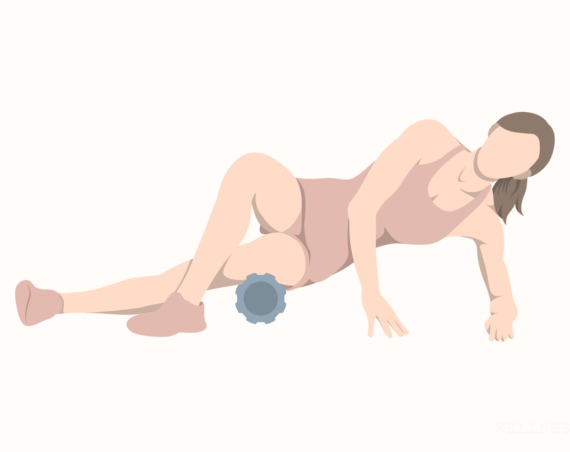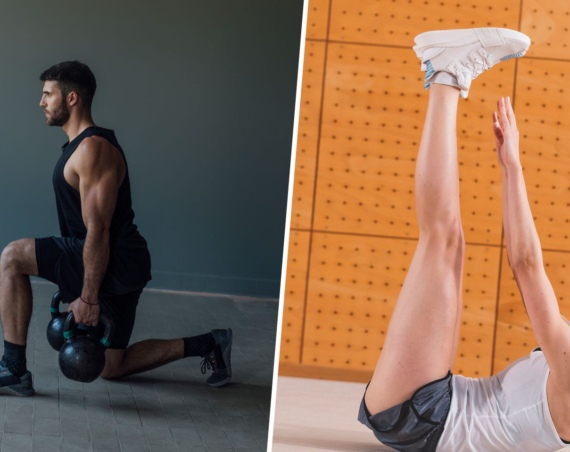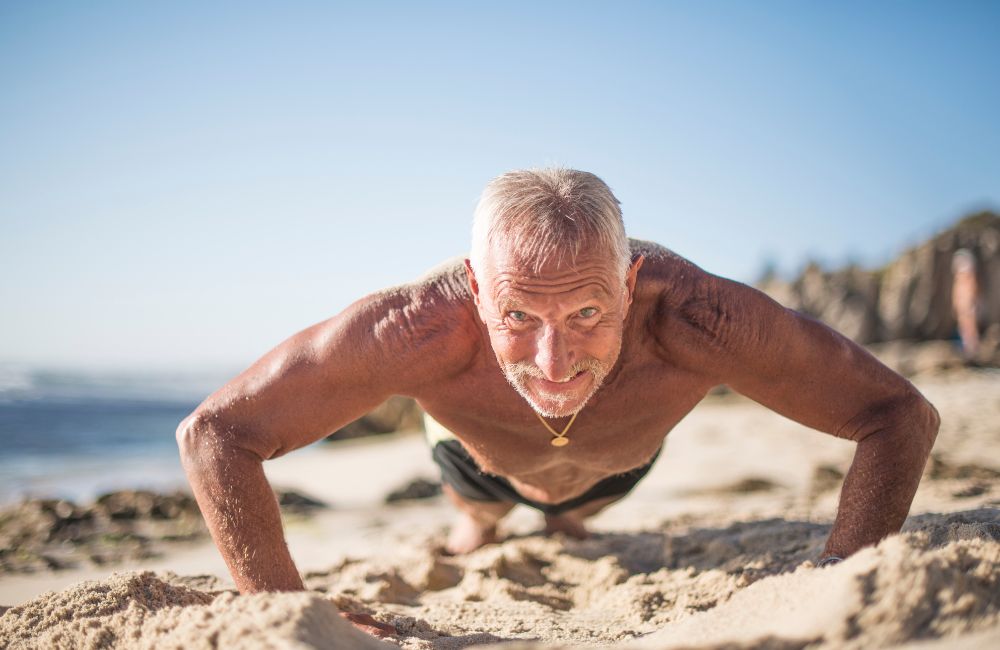
Want to defy the aging process? There’s no shortage of anti-aging treatments available, from skincare to supplements. But when it comes to real, long-lasting youthfulness, exercise is the true champion.
Exercise is like a magic pill against the effects of aging. Tailored exercise plans for those in their 60s and beyond can effectively slow down age-related muscle loss, and improve flexibility, stability, and mobility.
In just under 20 minutes a day, you can build strength, regain balance, and maintain your independence.
How? By prioritizing functional strength training and regular stretching. Functional strength training focuses on exercises that mimic everyday movements like squats, lunges, rows, and get-ups.
Mastering these movements prepares you for daily tasks such as getting out of bed, picking things up, using the bathroom, or climbing stairs. By training in this way, you can stay independent and active as you age.
Stretching is also crucial for protecting your body. It helps maintain your range of motion, stability, and mobility, reducing the risk of falls and injuries.
To age gracefully and lead a healthy life, including walking, stretching, and at least two to three days of basic strength training. These exercises not only strengthen your muscles but also improve balance, posture, and mobility.
We encourage you to incorporate the following exercises into your routine.
8 Exercises to Do to Stay Fit and Strong After 60
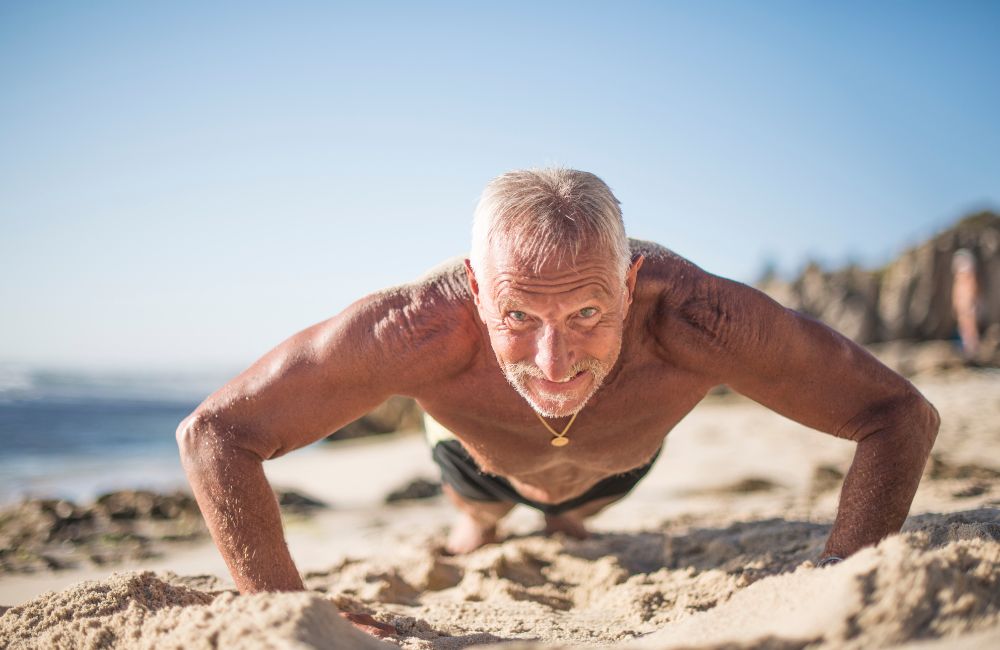
You’ll also like:
Want to Age Well? Build Overall Body Strength and Muscle Without Weights With These Five Moves
Standing Side Bend Stretch
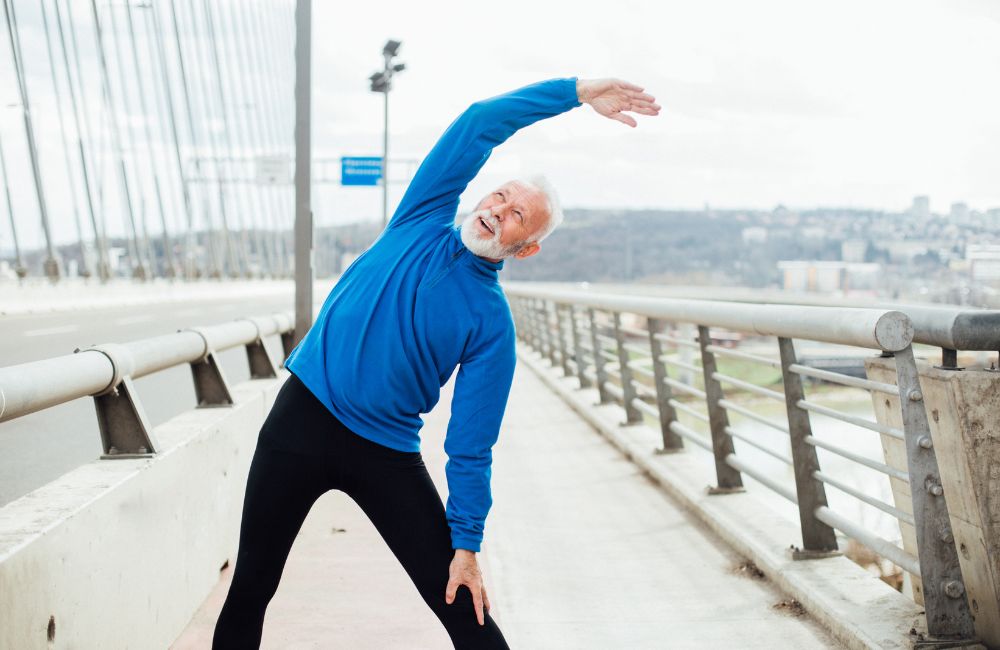
This stretch is a great one for the morning. It opens up your spine to a high degree and allows you to have an unrestricted, pain-free motion for the rest of the day.
How to Perform
- Start standing, with your feet spaced about hip-width apart.
- Place your left hand on your left hip/waist area, and raise your right hand up over your head.
- Lean as far as you can toward the left, reaching your right hand further over your head at the same time.
- Once you’ve gone as far as you can, hold the stretch for 30 seconds, then switch sides.
- Complete 4 sets on each side, 4-5 times per week.
Pigeon Hip Stretch
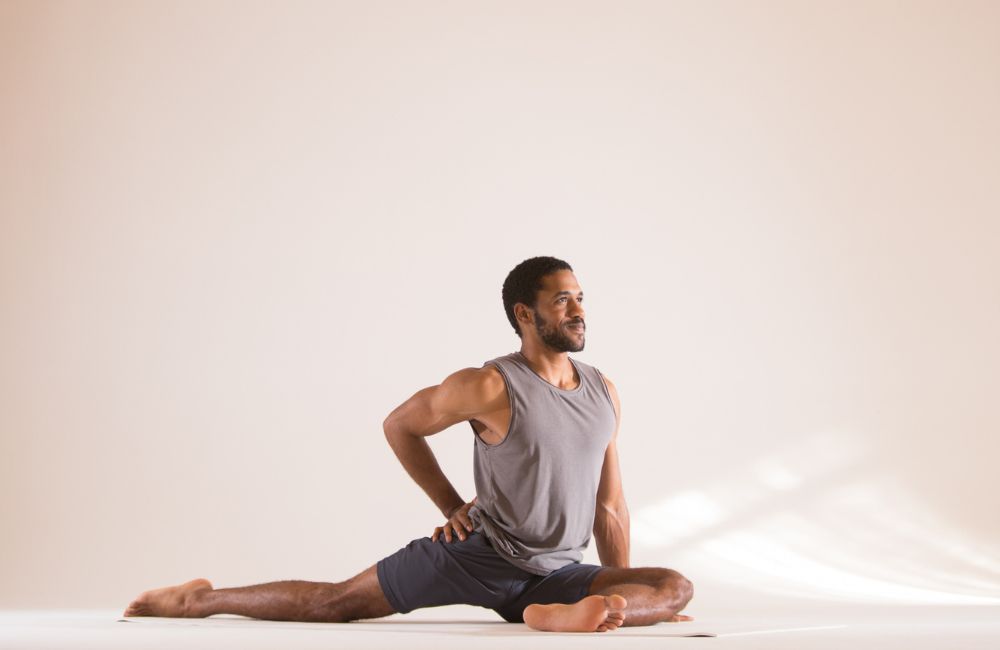
Many times, when people think of stretching, they immediately jump to yoga poses. The pigeon stretch is one of the best yoga poses for hip flexibility and mobility.
However, you should be careful with this exercise on your first try, as it can be very intense. If you feel pain due to the intensity of this stretch, feel free to pad up your knees, hips, and other areas with towels in order to increase your comfort.
How to Perform
- Start with your hands and knees on the ground.
- Next, place your right knee between your hands and turn your ankle so that it is close to your left hand.
- Then, slide your left knee backward slowly.
- Once you feel a deep stretch in your right hip, hold this position for 30 seconds.
- Repeat this stretch 4 times on each side, 4-5 times per week.
Glute Bridges
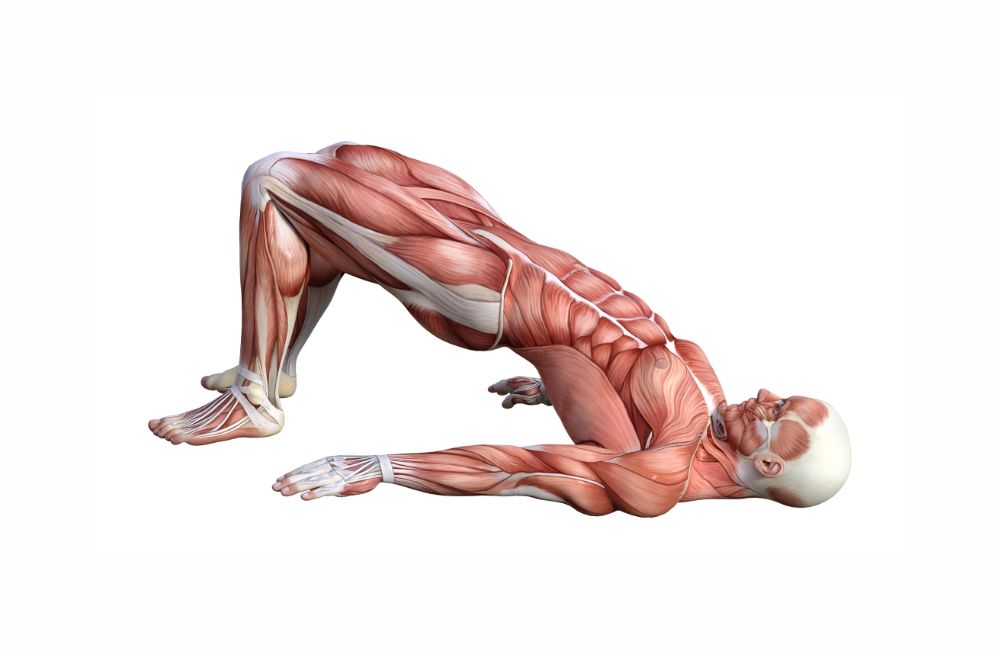
Bridges come up a lot on lists of best exercises. This is because bridges are one of the best exercises you can do, hands down!
This exercise is easy to learn, easy to progress, and safe for almost everyone.
How to Perform
- Lie flat on your back, with your feet flat on the floor and your knees bent.
- Press your heels into the floor and lift your hips up toward the ceiling.
- Hold this position for 10 seconds, then return to the starting position.
- Repeat for 3 sets of 10-12 reps, 4-5 times per week.
Upward Dog
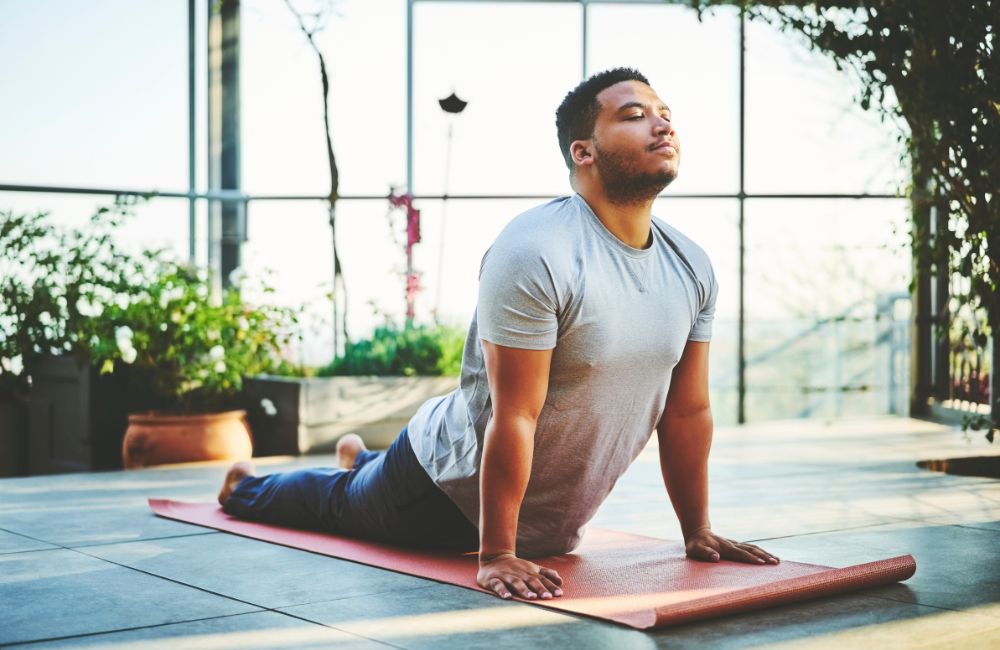
Last but not least, we have another great yoga stretch.
The upward dog is a terrific stretch for the spine, hip flexors, and abs. This move forces you into deep spinal extension. As a result, this is a commonly prescribed stretch for many forms of back pain.
How to Perform
- Lie flat on your stomach, with your feet close together.
- Next, place your hands on the ground and push up, keeping your hips on the floor.
- Hold this position for 30 seconds and repeat it 4 times per session.
- Complete 4-5 sessions per week.
Squat
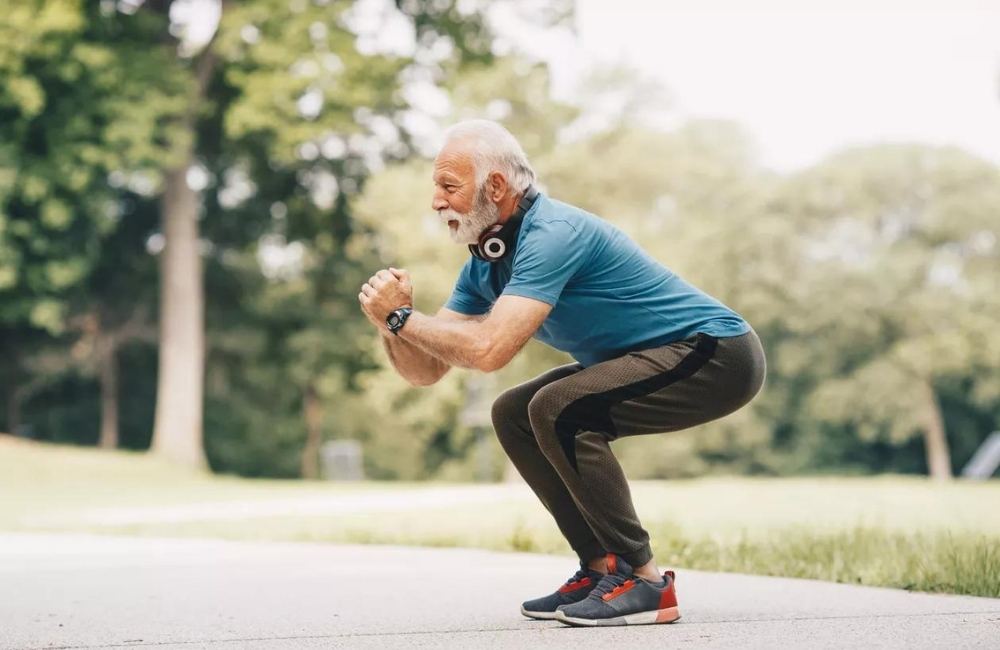
Squats are one of the best functional strengthening exercises in existence.
This move improves the stability of the legs and core. Even better, simply adding weight to the exercise can make it much harder and serves as a perfect progression as time goes by.
How to Perform:
- Stand with your feet about hip-width apart.
- Slowly lower your hips down toward the ground, as if you are sitting in a chair.
- Next, contract your glutes and quads as you rise back into standing.
- Repeat for 10 repetitions per set, 3 sets per session, and 3 sessions per week.
Dynamic Bird Dogs
Bird dogs are phenomenal for improving strength throughout the back and core. This movement engages the multifidi, the glutes, and various other muscles throughout the body. By performing them in a flowing manner, you can also improve balance and proprioception significantly.
How to Perform:
- Start on your hands and knees, with your hands directly below your shoulders and your knees right under your hips.
- Next, reach your right arm straight out in front of you as you simultaneously kick your left leg behind you.
- In this position, you should be able to trace a line from your left heel to your right fingertips.
- Hold this pose for 3 seconds, then bring your right elbow to your left knee, near your chest.
- Hold this position for 3 seconds then return to the position described in step number 2.
- Continue to repeat in this manner for 3 sets of 10 reps per session. Be sure to perform this movement on both sides.
Side Plank Exercise
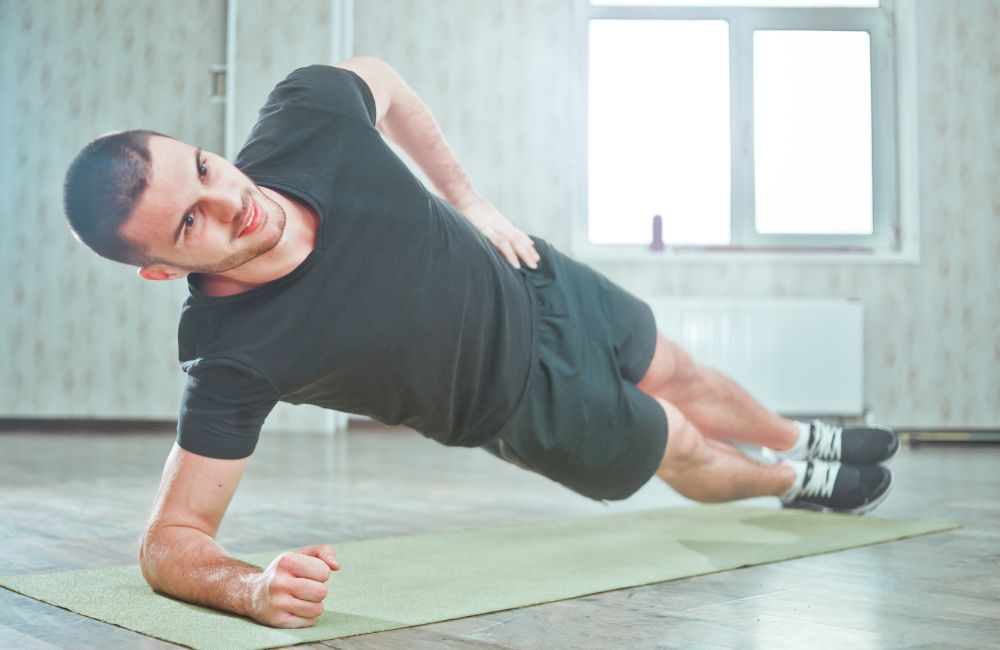
The obliques are an oft-neglected muscle group. Most people prioritize the six-pack muscles, known as the rectus abdominis. While the rectus is an important muscle, the obliques are equally vital for good health.
This move uses isometric contractions in order to build endurance and strength throughout the core.
How to Perform:
- Start by lying on your left side.
- Tuck your left forearm underneath you.
- At the same time, stack your right foot on top of your left.
- Rise up onto your left forearm and left foot.
- Be sure that your body is in a straight line from the top of your head down to your feet.
- Hold this position for 30 seconds, and repeat 4 times on each side per session.
Forearm Plank
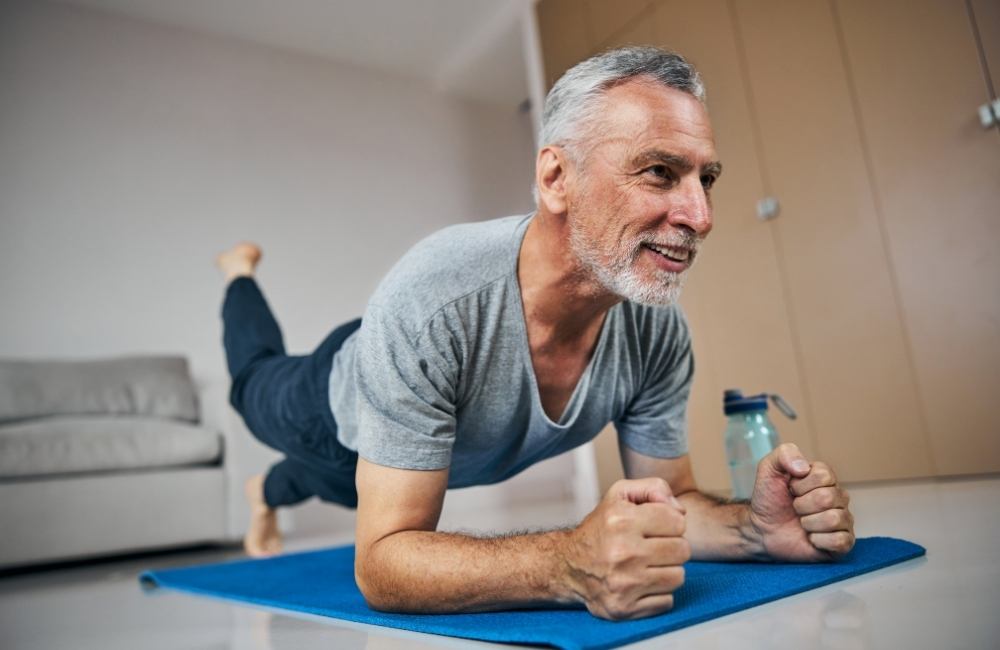
Planks are one of the best low-impact exercises there is.
This isometric exercise works your core and abs without putting pressure on your joint. By slowly increasing your hold time on planks, you’ll slowly but surely increase your strength and endurance in your core.
How to Perform:
- Start on your forearms and toes, with your back flat as a board.
- Ensure that your spine is completely straight and not bending upward or downward.
- Hold this position for as long as you can (aim for 30 seconds to start) and perform 3 sets per day, 2-3 times per week.

